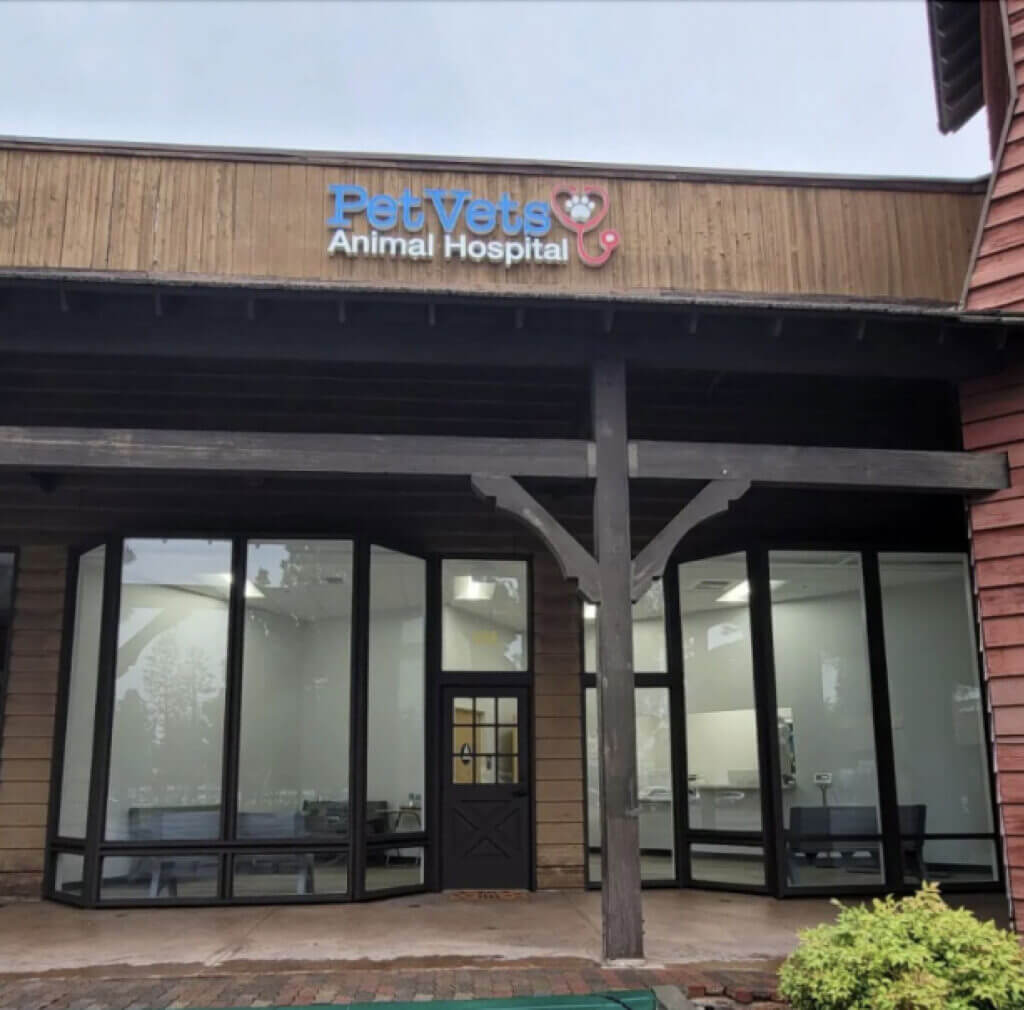Dog ACL Repair
With Extracapsular Nylon Technique
in San Dimas, CA
Anterior cruciate ligament (ACL) rupture is a common injury in dogs, affecting their hind limbs. This ligament plays a crucial role in stabilizing the knee joint, and its rupture can lead to lameness and discomfort.
Understanding the clinical signs, treatment options, and recovery process is essential for pet owners facing this situation.
What Are the Clinical Signs of an ACL Rupture?
The signs of ACL rupture in dogs are often evident and can include:
- Lameness in the affected hind limb, which may range from mild to severe.
- Difficulty in rising or jumping.
- Swelling around the knee joint.
- Pain or sensitivity when the joint is touched.
- A noticeable clicking sound when the dog walks.
If you notice any of these signs in your dog, it’s important to consult a veterinarian promptly for a proper diagnosis and treatment plan.
How Is an ACL Rupture Diagnosed?
Diagnosing an ACL rupture in dogs requires a thorough physical examination by a veterinarian. The veterinarian may also recommend taking X-rays or using other diagnostic tools to rule out other possible injuries or conditions. The X-rays will show any changes in the knee joint, such as joint effusion, bone spurs, or degenerative changes. However, in many cases, a diagnosis of ACL rupture is based on clinical signs and patient history.
Extracapsular Nylon Technique
One common surgical technique used to repair ACL rupture in dogs is the extracapsular nylon technique. This procedure aims to stabilize the knee joint by replacing the damaged ligament with a strong nylon suture placed outside the joint capsule.
During the surgery:
- The surgeon makes an incision over the knee joint to access the damaged ligament.
- The torn ACL is removed, and the joint is examined for any additional damage.
- A small hole is drilled in the femur and tibia bones to allow passage of the nylon suture.
- The suture is then passed around the fabella (a small bone in the knee) and secured in place, providing stability to the joint.
What Can I Expect During My Dog’s Recovery After Surgery?
After surgery, your dog will require careful post-operative care to ensure a successful recovery. This may include:
- Strict rest and limited activity to allow the surgical site to heal properly.
- Pain management medication prescribed by your veterinarian.
- Physical therapy exercises to improve muscle strength and joint mobility.
- Follow-up appointments to monitor progress and remove any stitches.
It’s crucial to follow your veterinarian’s instructions closely during the recovery period to optimize your dog’s chances of a full recovery.
Dog ACL Repair With Extracapsular Nylon Technique at PetVets Animal Hospital
Anterior cruciate ligament rupture is a common orthopedic injury in dogs that can cause significant discomfort and lameness. Prompt diagnosis, appropriate surgical intervention such as the extracapsular nylon technique, and diligent post-operative care are essential for successful treatment and recovery. By understanding the clinical signs, treatment options, and recovery process, pet owners can provide their furry companions with the best possible care and support.
Frequently Asked Questions About ACL Repair in Dogs
-
How long does it take for a dog to recover from ACL surgery?
Recovery time can vary depending on factors such as the dog’s size, age, and overall health, as well as the extent of the injury. In general, dogs may start bearing weight on the affected limb within a few days to a couple of weeks after surgery. However, complete recovery may take several months, with gradual improvement in mobility and function.
-
Can ACL injuries in dogs heal without surgery?
While some dogs with partial ACL tears may respond to conservative management such as rest, anti-inflammatory medication, and physical therapy, complete ACL ruptures typically require surgical intervention for long-term stability and function of the knee joint.
-
What are the potential complications of ACL surgery in dogs?
Complications following ACL surgery can include infection, implant failure, and delayed healing. It’s essential to closely monitor your dog for any signs of discomfort, swelling, or abnormal behavior and promptly consult your veterinarian if you have any concerns.
-
Will my dog be able to return to normal activities after ACL surgery?
With proper rehabilitation and postoperative care, many dogs can regain function and return to normal activities following ACL surgery. However, it’s important to follow your veterinarian’s recommendations regarding exercise restrictions and rehabilitation exercises to ensure the best possible outcome.

